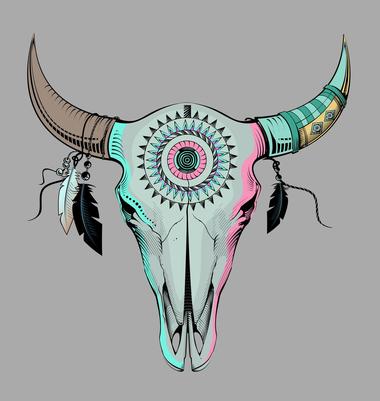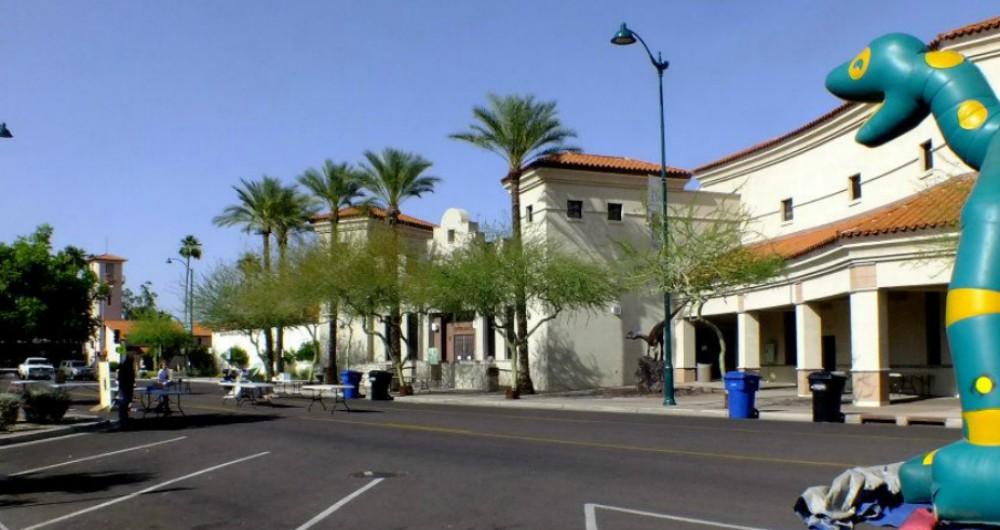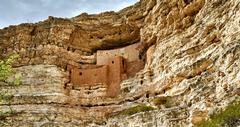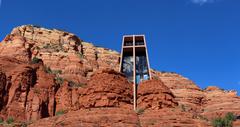The Arizona Museum of Natural History, dedicated to showcasing and preserving the cultural and natural history of Arizona and the surrounding American Southwest, was founded in the Mesa, in 1937. The museum was named Mesa Southwest Museum at the time and houses a small collection of artifacts relevant to Arizona history. The building was originally the mesa city hall and housed the municipal courts, police and fire departments, the jail and the city library. Arizona Museum of Natural History, AzMNH, underwent several renovations over the last two decades, including adding an entirely new wing in 2,000 and a research facility in 1995.
The museum currently contains over 60,000 artifacts from research and donations that are housed in the 74,000 square foot building. Arizona Museum of Natural History is partnered with The Southwest Archaeological team to support the archaeology and anthropology section of the museum. Made up of volunteers, this award winning team conducts research on Native American culture in the southwest and develops the exhibitions in this area. Many of the artifacts are found in active excavation site, Mesa Grande. The Paleontology section of the museum is the primary objective of the AzMNH. Researches work directly for the museum and are also involved in many projects throughout the southwest. The natural history section of the museum is in charge of the excavation, research, and preservation of the fossil collections at the museum and work with several universities and state and local agencies in this effort.
Permanent Exhibitions

© Arizona Museum of Natural History
The Cenozoic Lobby is the main entrance to the AzMNH. Guests are welcomed in to the museum by creatures from over three million years ago up until about 10,000 years ago known as the Pliocene-Pleistocene Epochs. Some of the animals are a Columbian mammoth, a mastodon, ancient horses, the American lion which has been extinct for 10,000 years and the megalodon jaws. All of the animals are displayed as giant fossils. The megalodon jaws hang over the interior museum entrance.
The Natural History Exhibit features a collection of five different exhibitions as focusing on an aspect of the natural history of the American Southwest. Origins, studies the universe and discusses the history of planet earth and its place in the cosmos, how it has evolved from the big bang theory and some of the different space explorations that America has been completed. Many NASA satellite images decorate this space and also the use of computer generated images of what the earth would’ve looked like in all its many stages from conception through present time are plotted throughout the display. Origins also showcases the origins of Humans and what our evolutionary process looked like.
Dinosaur Mountain and Dinosaur Hall are two exhibitions that explore the world of the dinosaurs. Dinosaur Hall features fossils where visitors can learn about the evolutionary cycle of the dinosaurs and the different extinction theories. Dinosaur Mountain brings the era to life with moving and mechanical life size replicas of the dinosaurs in a manmade environment. Guests to this exhibit will feel like they are in Jurassic Park as they work their way through different habitats of these amazing creatures.
Arizona Through Time exhibition takes visitors from the first bacteria to the great T-Rex, while the early history of Arizona is plotted out. See the landscape change from a more tropical climate, to the arid desert that Arizona is today after the fall of the dinosaurs and the Ice Age.
The Paleo Dig Pit is a truly interactive experience where people can dig for fossils and dinosaur eggs. The pieces dug up in this area are not authentic fossils, but are life size replicas that make children feel like paleontologists themselves. This is a great space for the kids to play while adults take a little rest.
Plan Your Visit

© Courtesy of tettygreen - Fotolia.com
Because the Arizona Museum of Natural History is home to thousands upon thousands of artifacts, there are three exhibit stations that are used as rotating spaces. Sometimes the current exhibits may be displayed for a year, or they may be changed for special occasions
The Cultures of Ancient Americas is currently on display and focuses on the three eras of ancient peoples in the American Southwest. Many Native American cultures such as the Navajo, Hohokam, and Apache are explored in this exhibition. From the first Paleoindian peoples all the way through the plains people and what modern people think of when they learn of Native Americans in the area. Replicas of pit houses and other abodes are on display along with ancient ceramics including pottery.
Cretaceous Seas is a part of the Arizona through Time exhibit that specifically focuses on the transitions prehistoric animals had from sea onto land and the evolutionary process associated with it. Journey back to before the dinosaurs to the first creatures to ever walk on land. There are even plants that made a sea to land transition and 11 other species besides fish to amphibians that visitors can learn about in this exhibition.
Rulers of Prehistoric Skies features the biggest animals to ever take to the skies, the Pterosaurs. These ancient animals were not dinosaurs or birds and ruled the skies over 65 million years ago. Often times mistaken for Pterodactyls, replica bones of these creatures hang from the ceilings and over the tree top in this larger than life exhibit.
Others things to See and Do at Arizona Museum of Natural History
One of the unique things about Arizona Museum of Natural History is that it is also a research center for paleontology and archeology. Researchers and those with the proper credentials such as professors, can set up an appointment to spend time in the collections that are in storage. These items are occasionally on display in the rotating exhibit and only viewable by appointment when not being featured in the Exhibits.
Mesa Grande
Mesa Grande Cultural Park is an excavation site in the middle of the city that is home to a Hohokam temple mound. Listed on the National Register of Historic Places, the Mesa Grande has been open since the 1980s in an effort to preserve the culture. It is open to the public and volunteers with many different universities and agencies in Arizona work with museum staff to preserve these ruins. Mesa Grande Cultural Park is not on the Arizona Museum of Natural History grounds and does require a separate admission price.
The Arizona Museum of Natural History is a popular location for birthday parties, corporate functions and weddings. Even high school proms have been hosted at the AzMNH. Birthday parties are a blast at the museum with private rooms for the party and then exploration time until the museum closes.
53 N Macdonald, Mesa, AZ 85201, Phone: 480-644-2230
Map:







